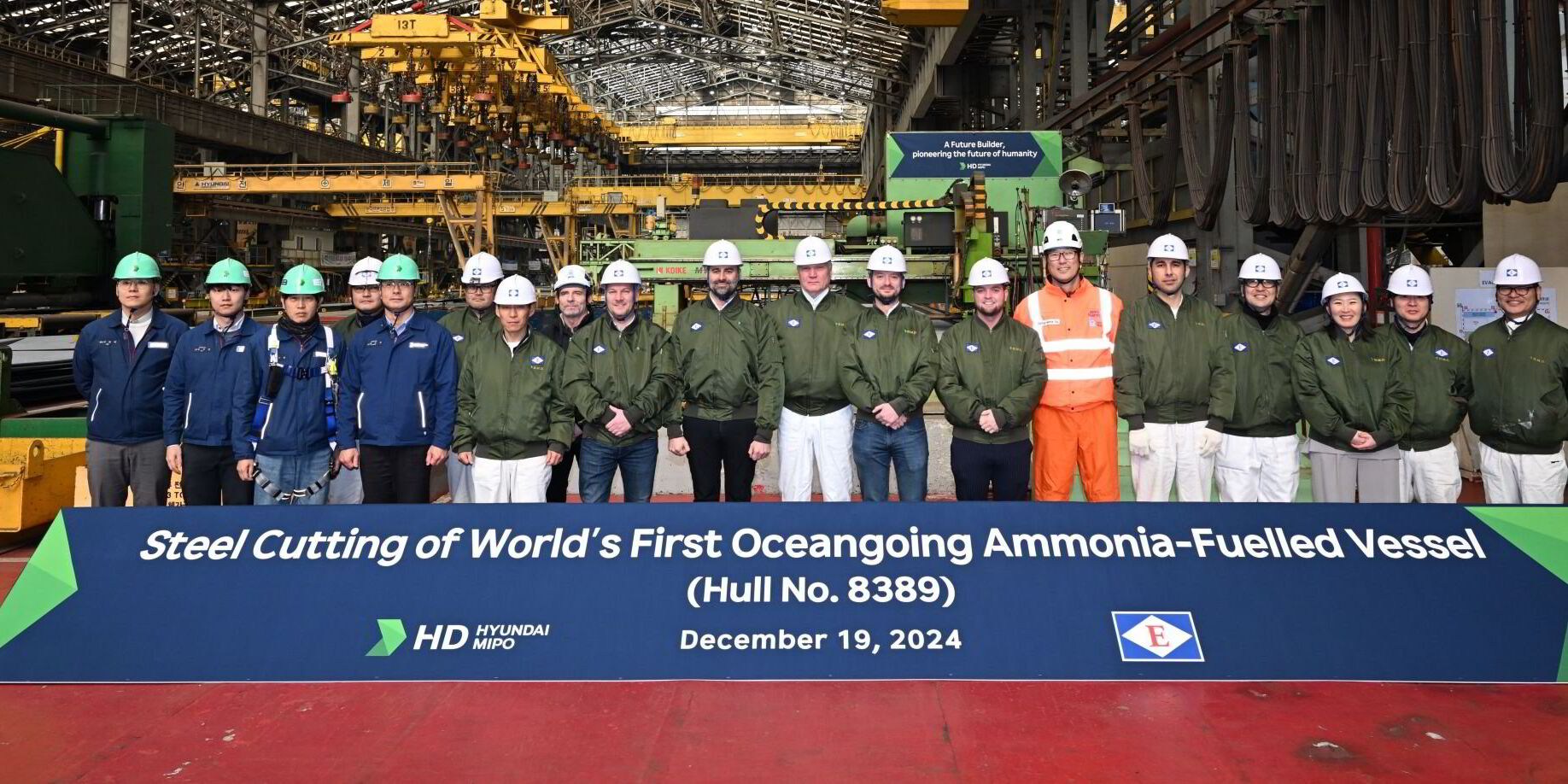Port of Rotterdam hosts ammonia ship-to-ship pilot transfer as it gears up for bunkering
A pilot ship-to-ship transfer of ammonia was carried out between two vessels in the Port of Rotterdam at the weekend as the first deliveries of newbuildings capable of using the new marine fuel loom.
The Port of Rotterdam said tanker owner Trammo, terminal owner and operator OCI, and equipment supplier James Fisher Fendercare took part in an operation where 800 cbm of ammonia at -33C was transferred between two ships — the 38,611-cbm Gas Utopia (built 2017) and the 35,000-cbm Oceanic Moon (built 2011).
The transfer took about 2.5 hours and was conducted alongside a new quay at the Maasvlakte 2 APM terminal.
Bunker barge operator Victrol shared its expertise during the preparation of the pilot, the port said.
“The demonstration validated the Port of Rotterdam safety framework for ammonia bunkering, establishing that it is possible to do this safely and without ammonia release in the port,” the port officals said.
Singapore undertook a similar ammonia STS transfer pilot operation in September.
Rotterdam, which is the world’s second-busiest port, sees about 10m tonnes of fuel bunkered per year.
The port officials said it aims to enable the bunkering of all alternative low-carbon fuels in the future.
It highlighted that ammonia does not emit CO2 when burned in the combustion process.
While the pilot used fossil or grey ammonia, the port said clean ammonia is expected to play a key role in the large-scale decarbonisation of shipping.
The Port of Rotterdam said it uses the international Port Readiness Level assessment tool to prepare for all new marine fuels.
It said it has already fully implemented this method for LNG and, to a large degree, for methanol. For ammonia, the pilot concludes level 6 and raises the port’s readiness to level 7, with all safety procedures ready to allow bunkering on a project basis.
It plans to share its learnings from the operation with the European Union and other ports.
The first ammonia dual-fuelled vessels are due to start delivering from early 2026.
Content Original Link:
Read Full article from Original Source TradeWinds www.tradewindsnews.com
" target="_blank">Read Full article from Original Source TradeWinds www.tradewindsnews.com
 English
English Chinese (Simplified)
Chinese (Simplified) Finnish
Finnish French
French German
German Greek
Greek Italian
Italian Norwegian
Norwegian Spanish
Spanish Swedish
Swedish





















































